

William Stopford
Every SUV, ute and van discontinued in Australia in 2025
11 Hours Ago
Warmed-up, relatively affordable hatchbacks from Kia and Honda go head-to-head in a battle for supremacy. They're extraordinarily similar cars on the spec sheet, but differences emerge once you drive them.

Senior Contributor
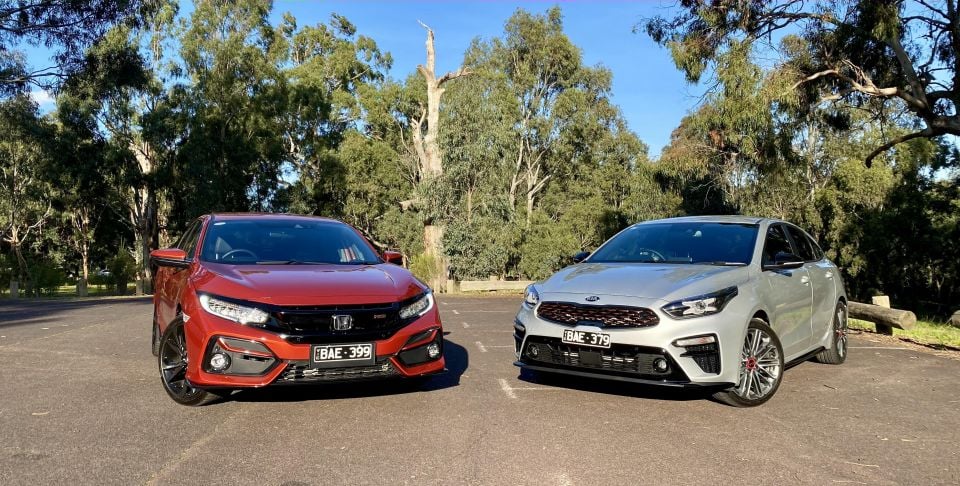

Senior Contributor
Neither of this pair are what you’d call proper hot hatches, but the Kia Cerato GT and Honda Civic RS offer more zip and more aggressive designs than your bog-standard small car.
Not everyone wants a stiffened, loud pocket rocket with lairy body accoutrements (like the Civic Type R), and these two clearly cater to people who fall into this camp.
In terms of list prices, dimensions, and features, this pair are very similar. They also both come in sleeker sedan body styles for those who like a boot. So why not put them head-to-head?
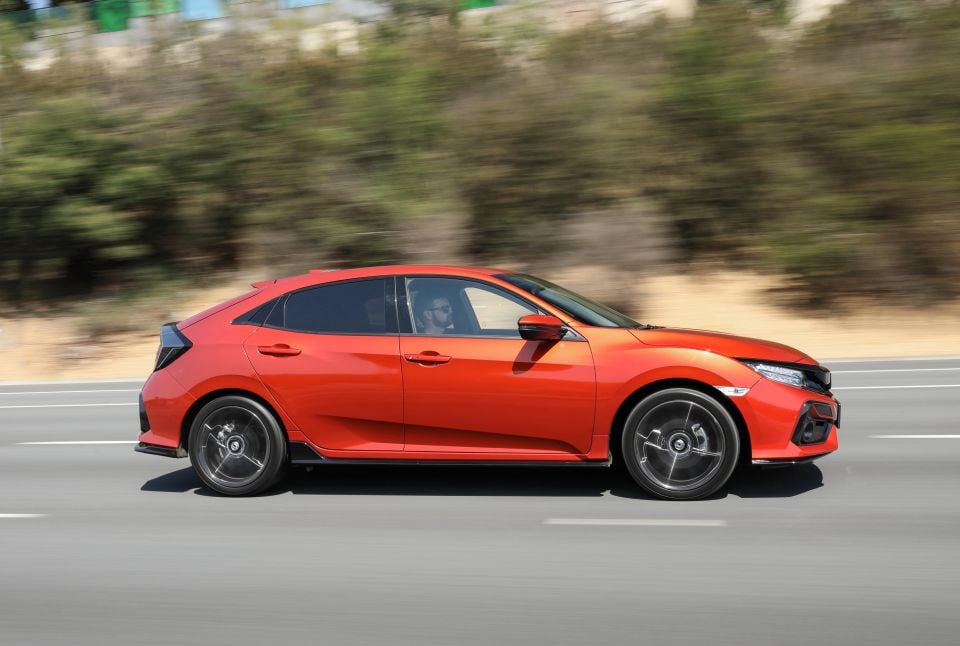
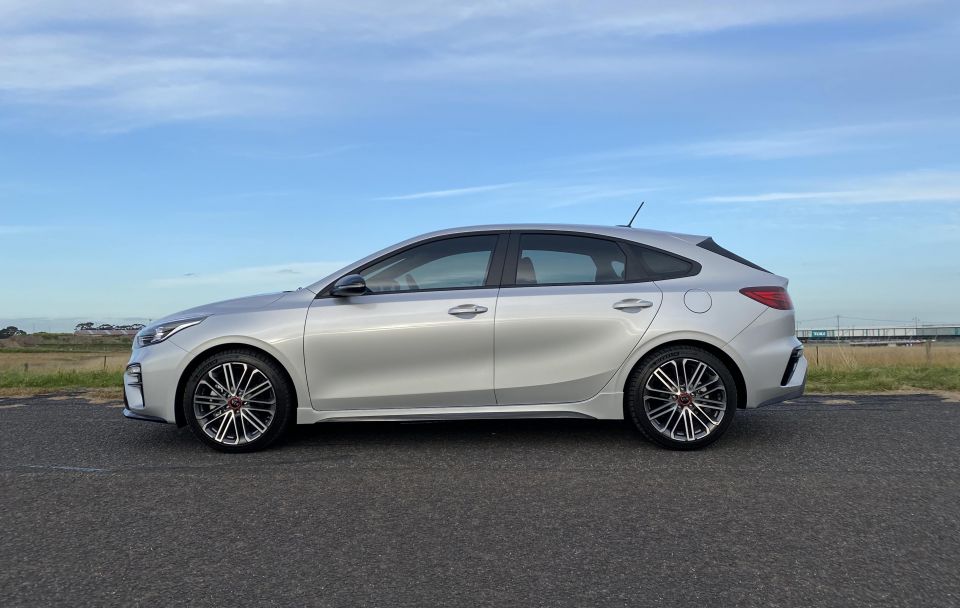
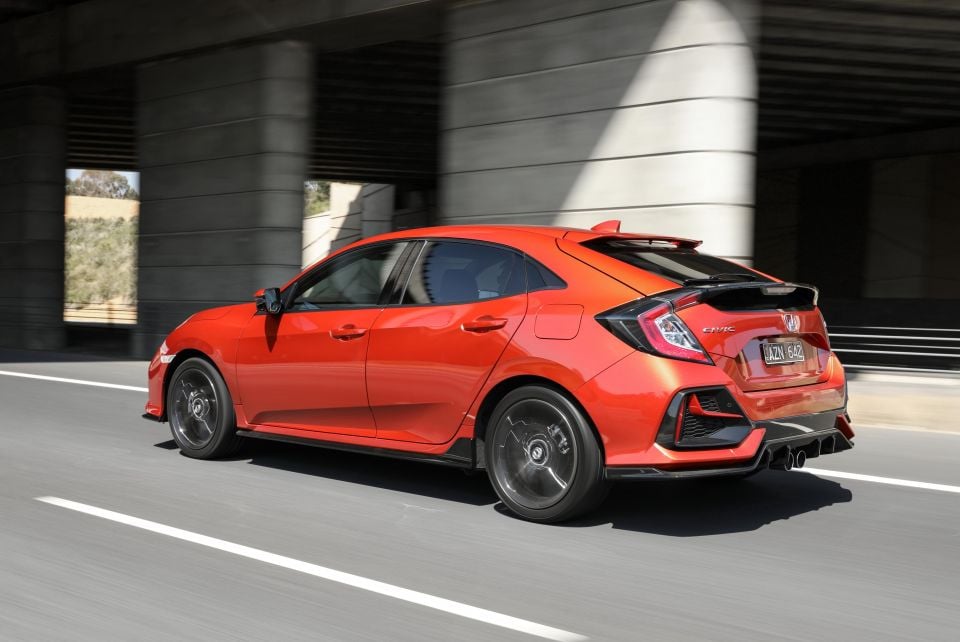
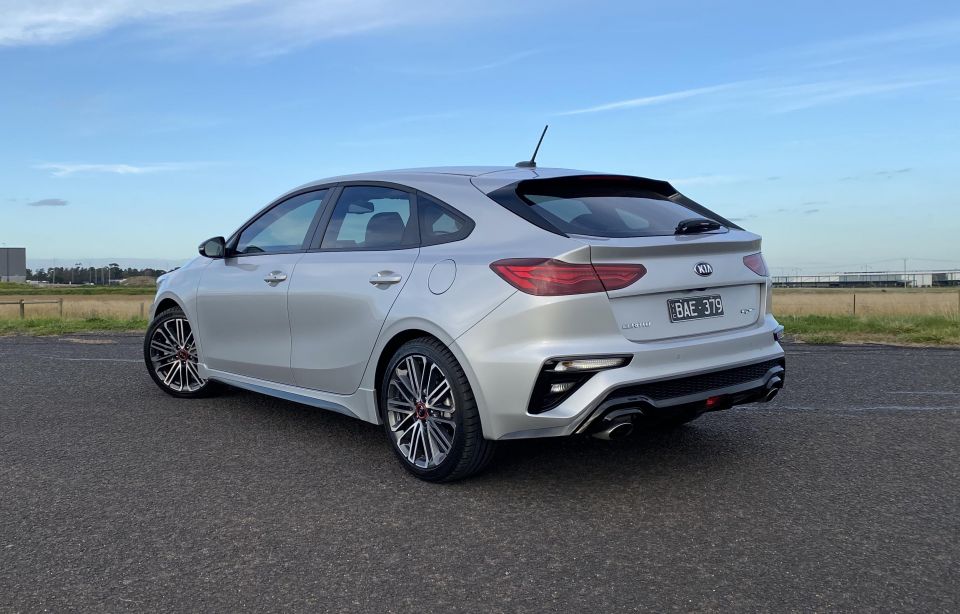
The Kia Cerato GT costs $33,490 compared to the Civic RS’s $34,040. These are both list prices, before on-road costs such as stamp duty and dealer delivery.
At the time time of writing, Kia had an offer on the Cerato GT of $34,490 drive-away, meaning it’s covering on-roads for you. The calculated drive-away price for the Honda Civic RS based on the company’s own site is $38,116 in Victoria.
So the Kia is more affordable in the real world unless you can wrangle a discount from the Honda dealer.
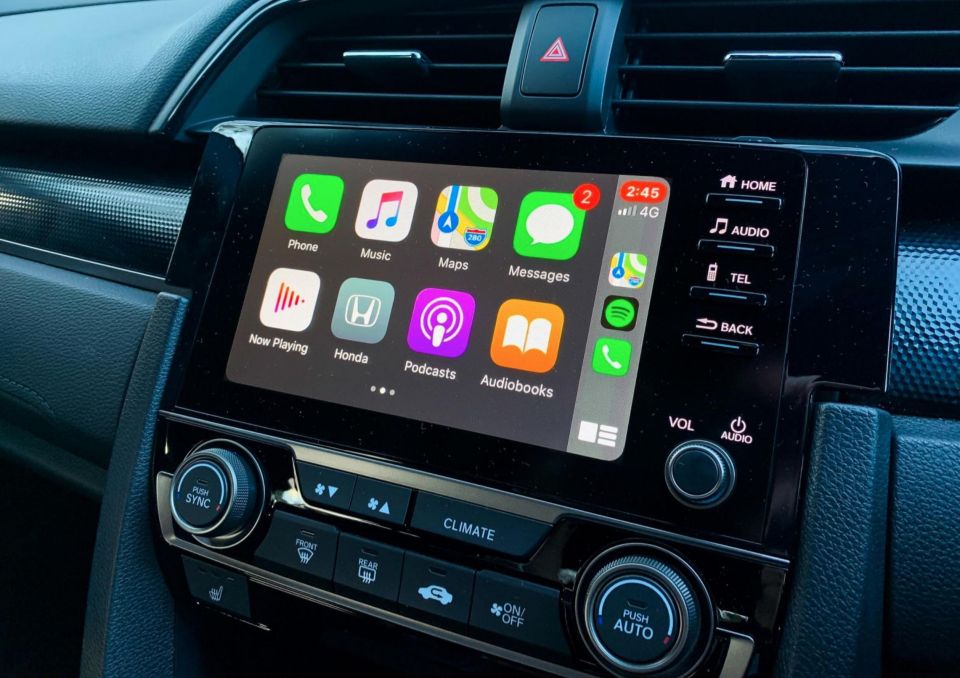
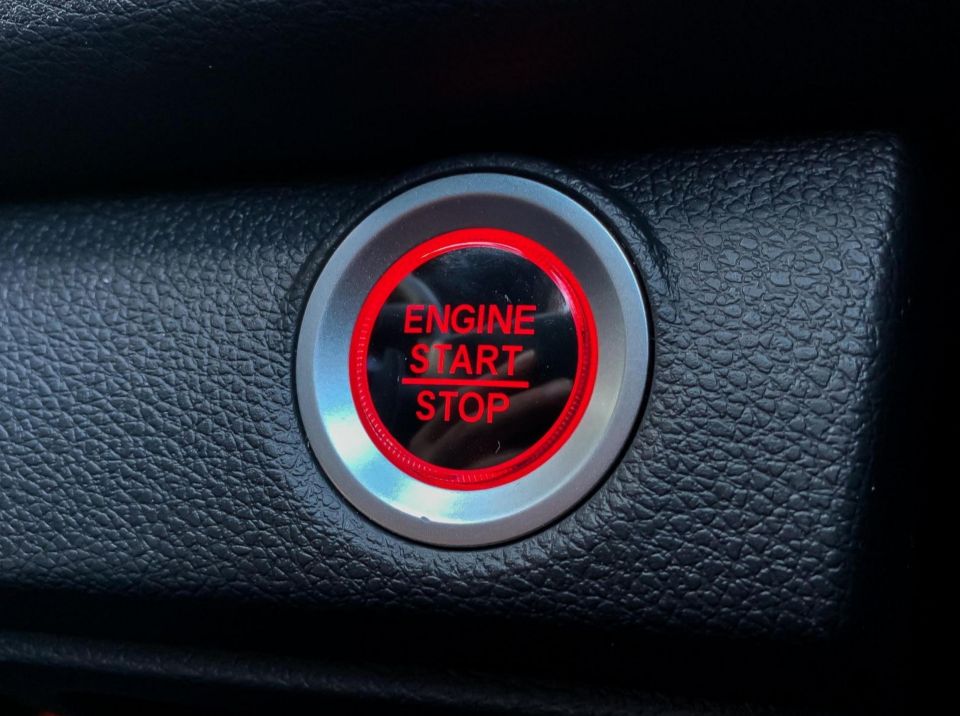
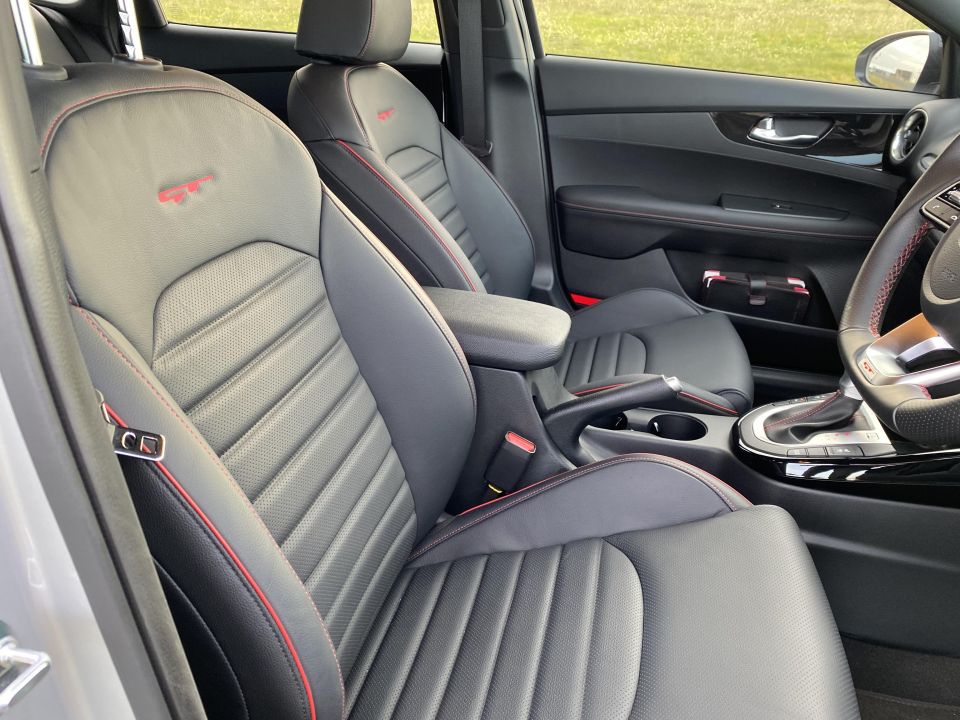
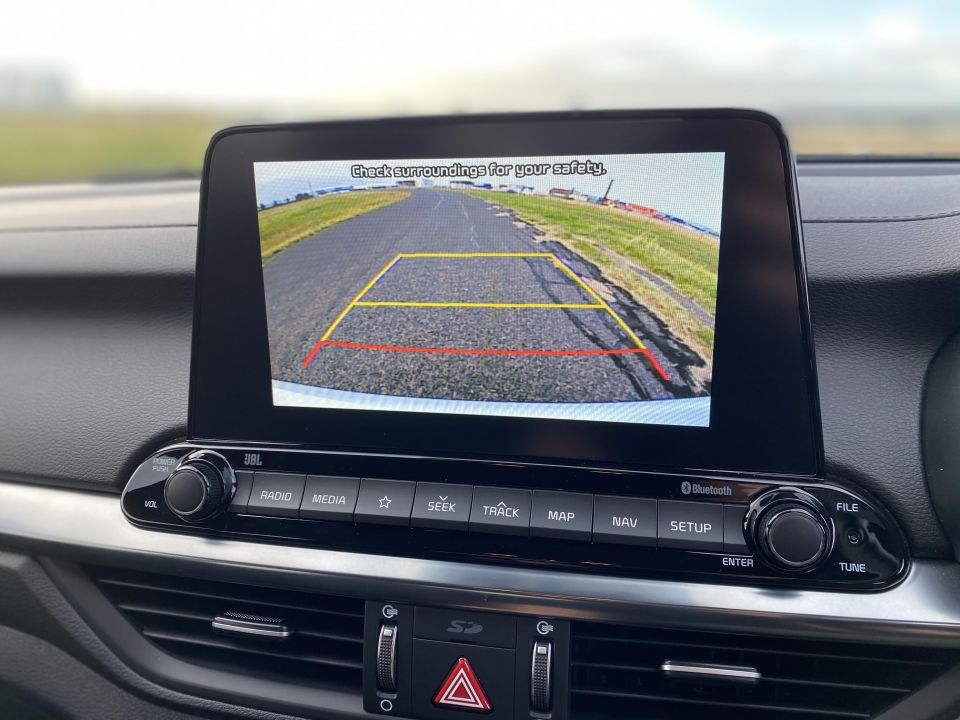
Features in common include:
18-inch alloy wheels with a temporary space-saver spare, Michelin Pilot Sport 4 tyres (coincidence?), dusk-sensing LED headlights, leather-appointed seats with electric adjustment and heating for the driver, dual-zone climate control, Apple CarPlay and Android Auto, a proximity key, revering camera, and parking sensors at both ends.
Unique to the Kia Cerato GT are driver-seat memory modes and front-seat ventilation, satellite navigation, and a wireless phone charging pad. The Honda’s 12-speaker audio system eclipses the Kia’s speaker count of eight.
Kia offers 10 paint choices, including this car’s Silky Silver, but also the evocative Platinum Graphite, Sunset Orange, Runway Red and Gravity Blue. The Honda can be ordered in eight colours, including this car’s Phoenix Orange, plus Ignite Red, and Brilliant Sporty Blue. Both also offer flat white.

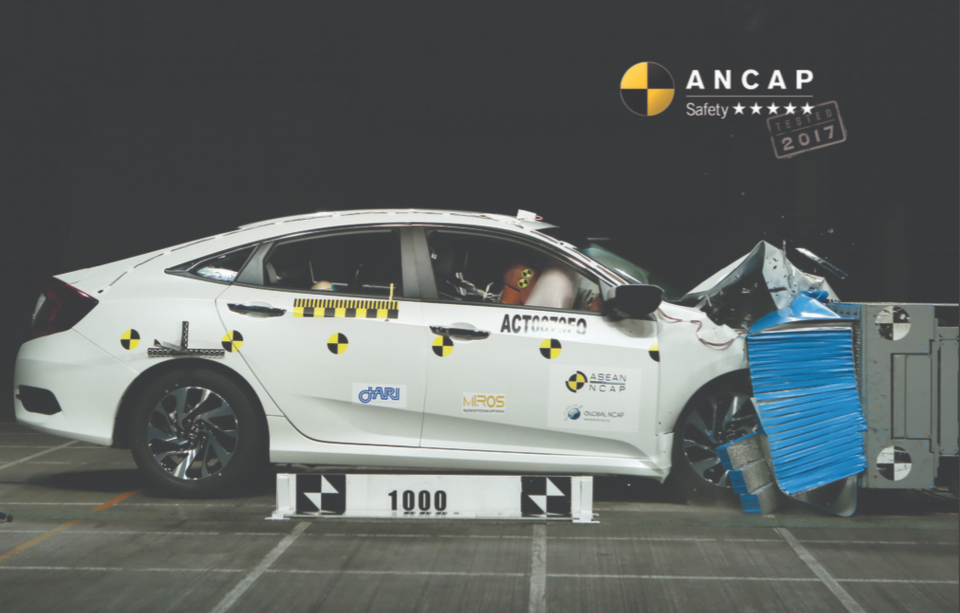

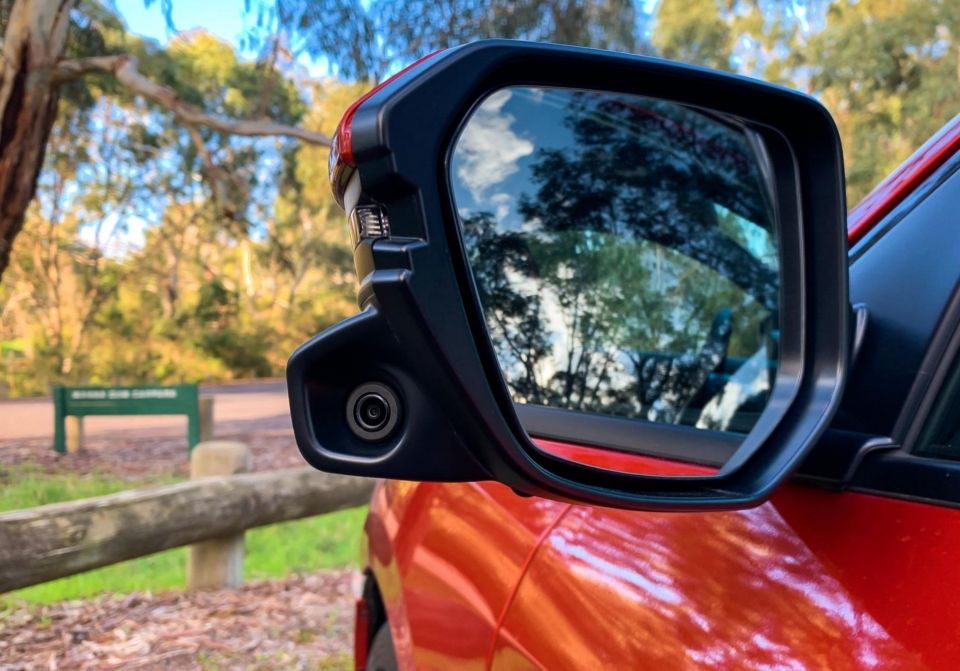
Both carry maximum five-star ANCAP crash ratings.
Equipment found on both includes:
Six airbags covering both seating rows, autonomous emergency braking that can detect cars and pedestrians, lane-departure alert and lane-keeping assist, and active cruise control.
The Kia has blind-spot monitoring lights for both sides whereas the Honda’s LaneWatch blind-spot camera view only covers the passenger side. The Kia’s autonomous emergency braking also senses bicycles, and it has rear cross-traffic alert.
| Cerato GT | Civic RS | |
|---|---|---|
| ANCAP score | Five stars | Five stars |
| Year tested | 2019 | 2017 |
| Adult Occupant | 90% | N/A |
| Child Occupant | 83% | N/A |
| Pedestrian/Cycles | 72% | N/A |
| Safety Assist | 73% | N/A |

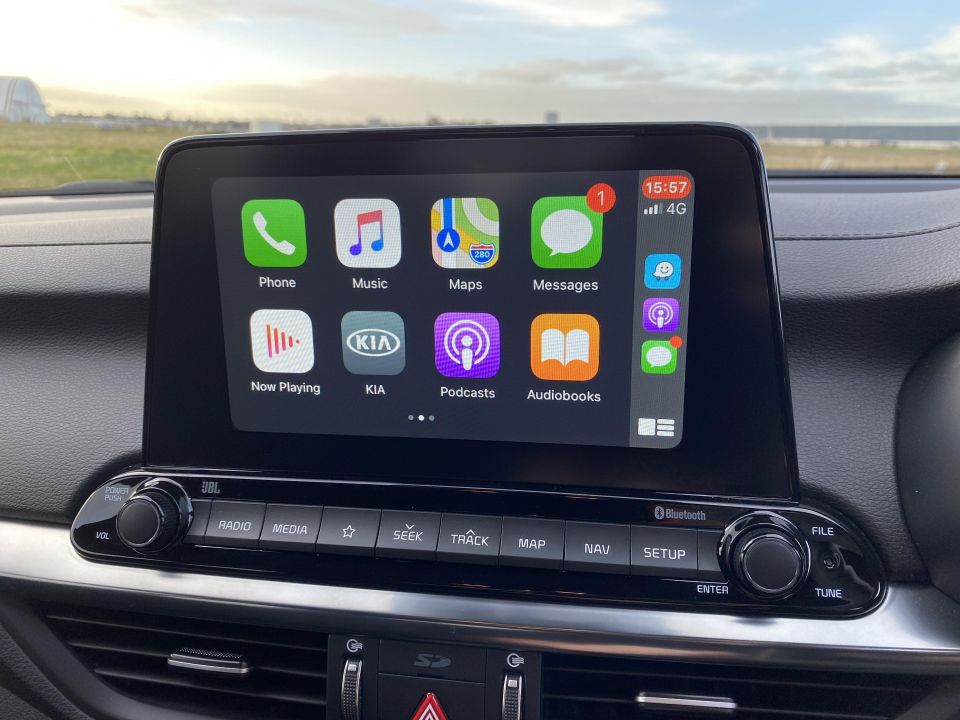
Kia Cerato GT
There’s definitely a colour theme in the Kia: black seats and surfaces, with red stitching everywhere, and a red lighting signature that certainly create an angry ambience at night.
The leather seats comfortable. The fact they’re electric, heated and cooled, and have memory presets its brilliant for a cheapish car like this.
The driving position is quite low, and there’s ample steering wheel adjustment. While you don’t get a head-up display, the analogue gauges are highly legible and the digital speedo ditto. The steering wheel itself looks and feels great, with tactile buttons and quality leather wrapping.
While there are some hard plastics used lower on the dash and along the transmission tunnel, the cabin is inarguably well put-together. The alloy pedal caps and silver highlights along the dash liven things up, albeit just a smidgen.
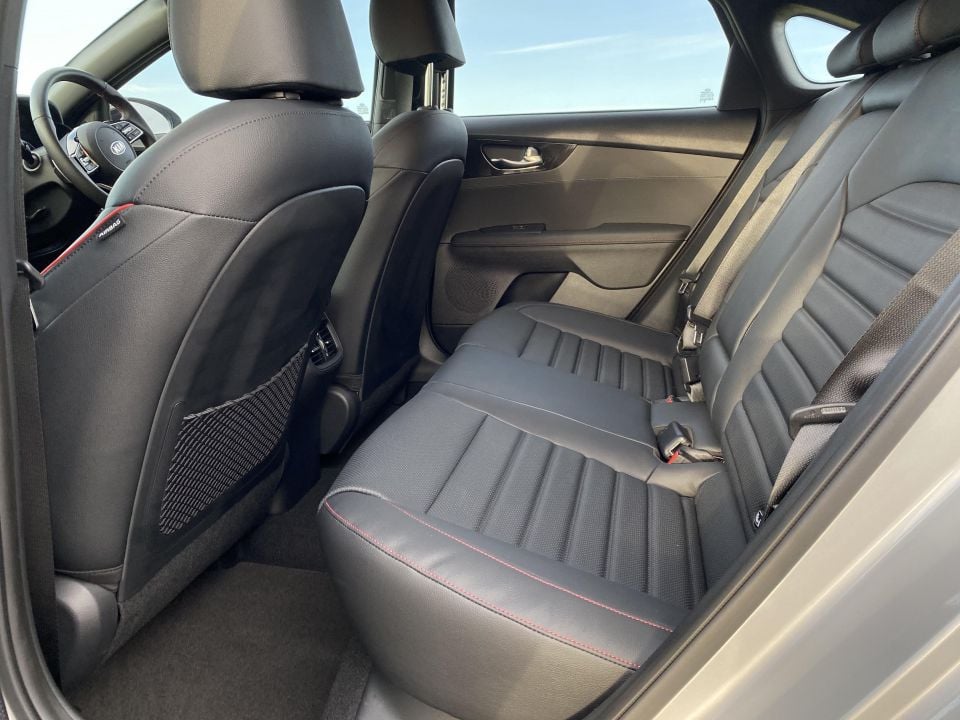
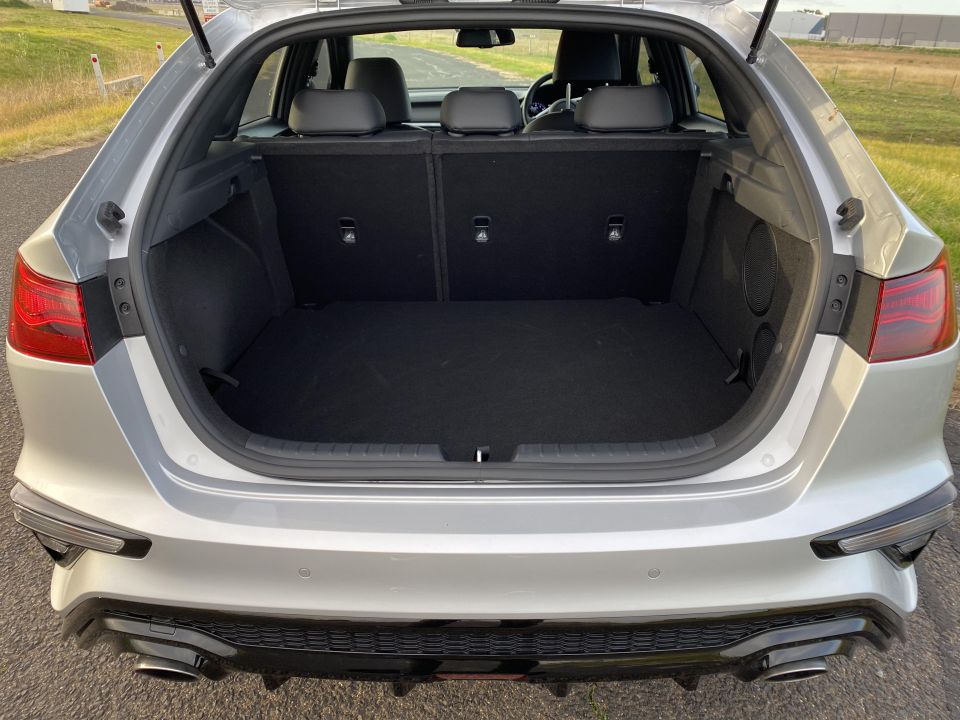
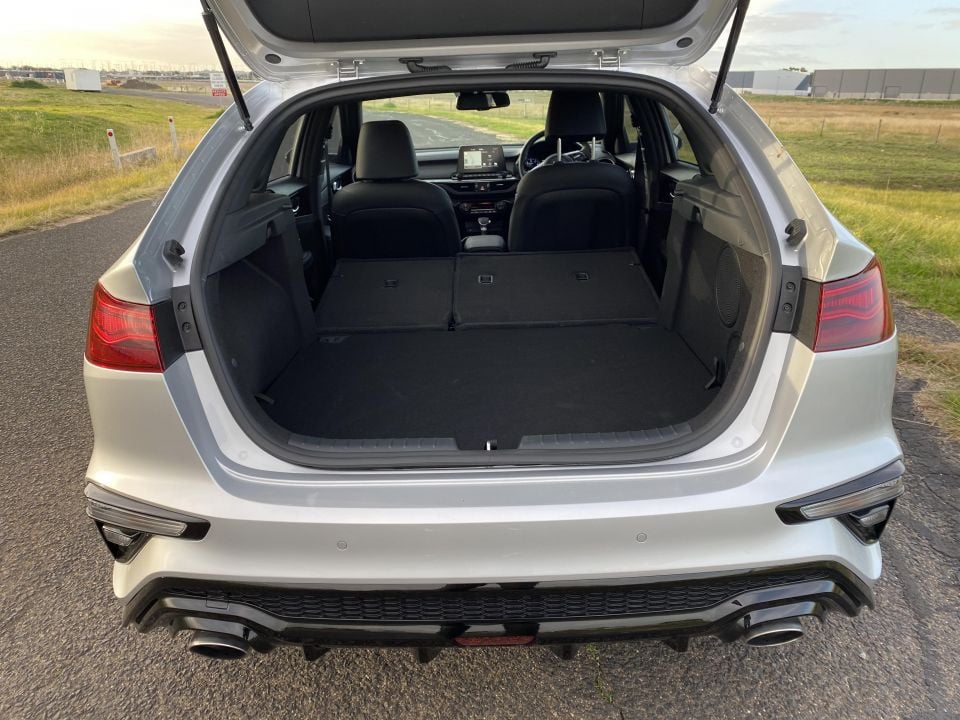
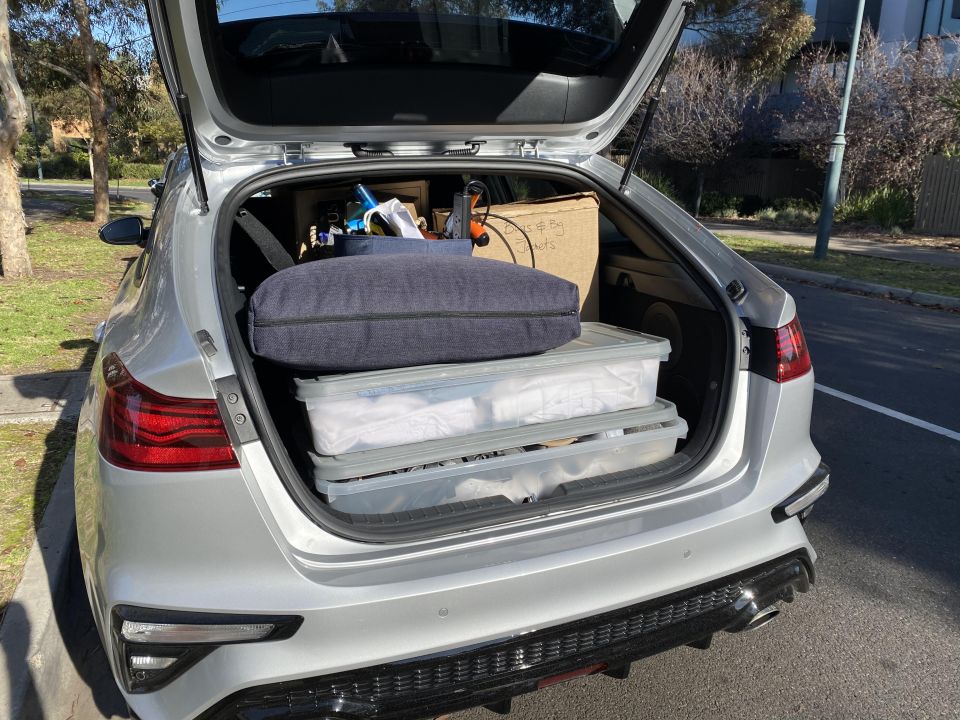
The 8.0-inch infotainment screen is good, although the setup in the Seltos SUV is better. The navigation has live updates, the reversing camera is acceptable, having phone mirroring is always ideal since you can view Google Maps, and the JBL audio sounds good.
Back-seat space is quite generous for the segment, certainly better than most rivals – aside from the super-spacious Honda Civic, which we’ll get to. Anyone under 185cm will be perfectly comfortable, and the presence of rear vents is most welcome.
For those with little kids, there are two ISOFIX anchor points and three top tether points located in the seat-backs.
Despite getting independent suspension (multi-link) unlike the base torsion beam setup, boot space is unaffected. The hatch has 428L of space, a rigid removable parcel shelf/cargo cover, and an under-floor space-saver spare. The back seats fold down to liberate more storage space.
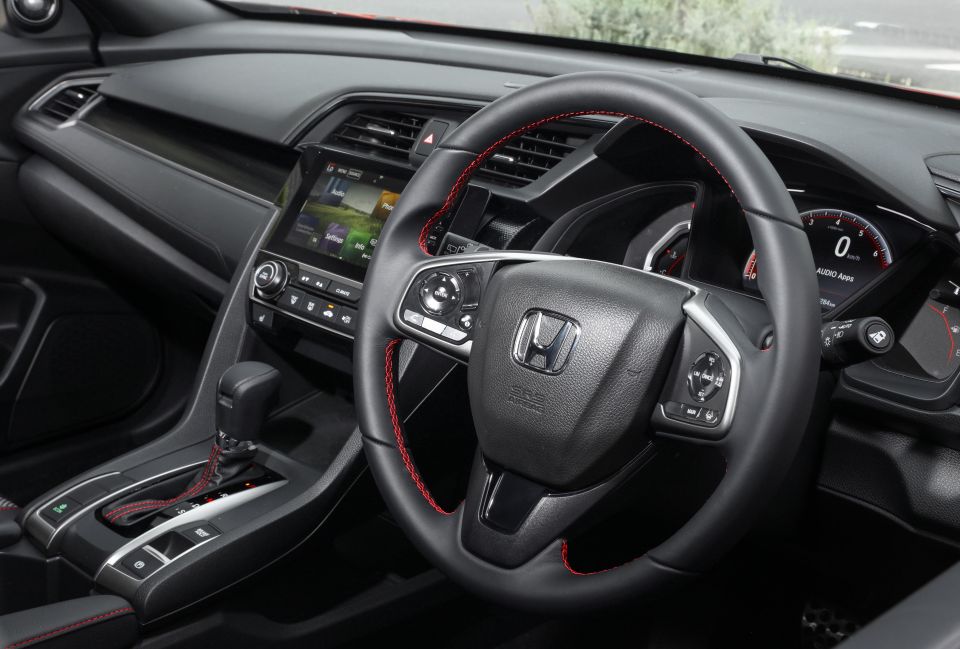
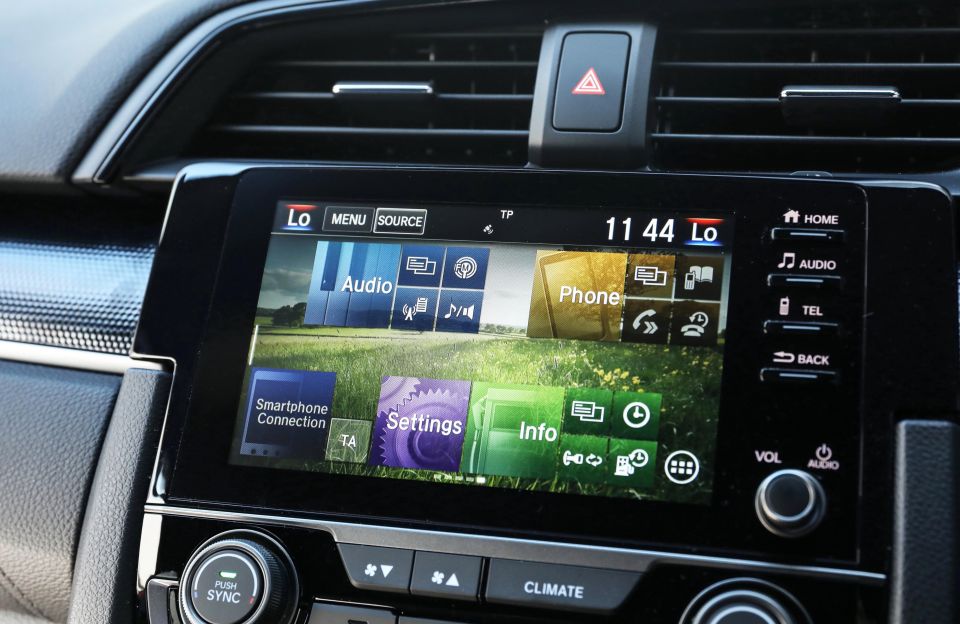
Honda Civic RS
The red stitching adds to the ambience, the fascia is tilted to jut out at the bottom more than the top, and the centre touchscreen is more nicely integrated into the dash.
The leather seats have a cool stripe on them and offer plenty of support, but they lack the ventilation function of the Kia. Both cars have pews made of hardy perforated leather, and feature red highlights and decent side bolstering.
The driving position is excellent – low-slung with a raised transmission tunnel to the left of your leg, giving the Civic a coupe-like feel. Tacky buttons aside, the steering wheel is also lovely to hold and offers heaps of adjustment. The centrally-situated digital speedo/tacho screen is highly legible.
Build quality is every bit as good as the Kia’s, and there are more soft-touch contact points. Like the Kia, the Civic’s metallic pedal covers add some design zest. The centre console is absolutely vast, and there’s a sneaky hiding area behind the fascia too.

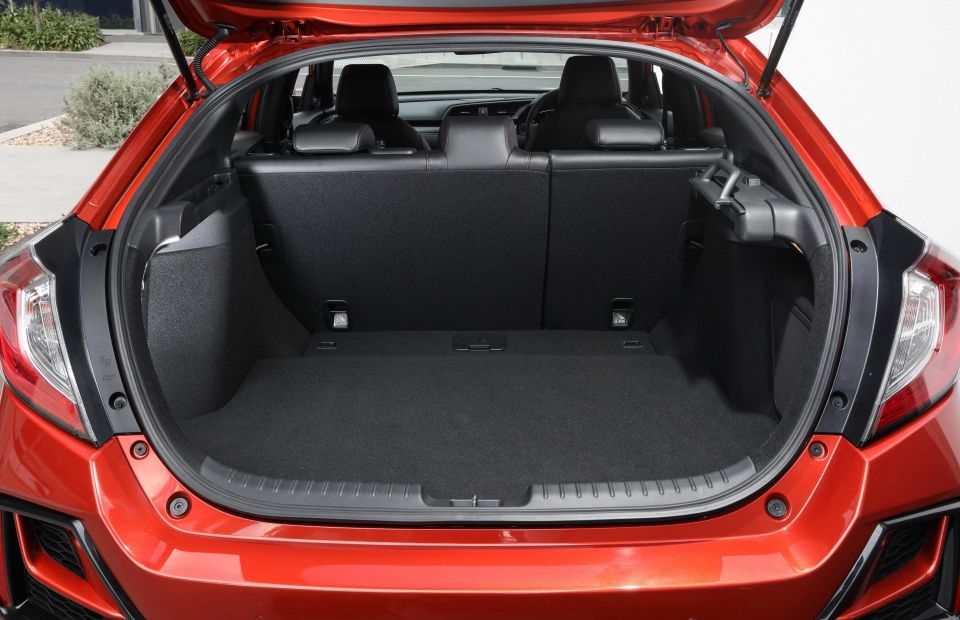
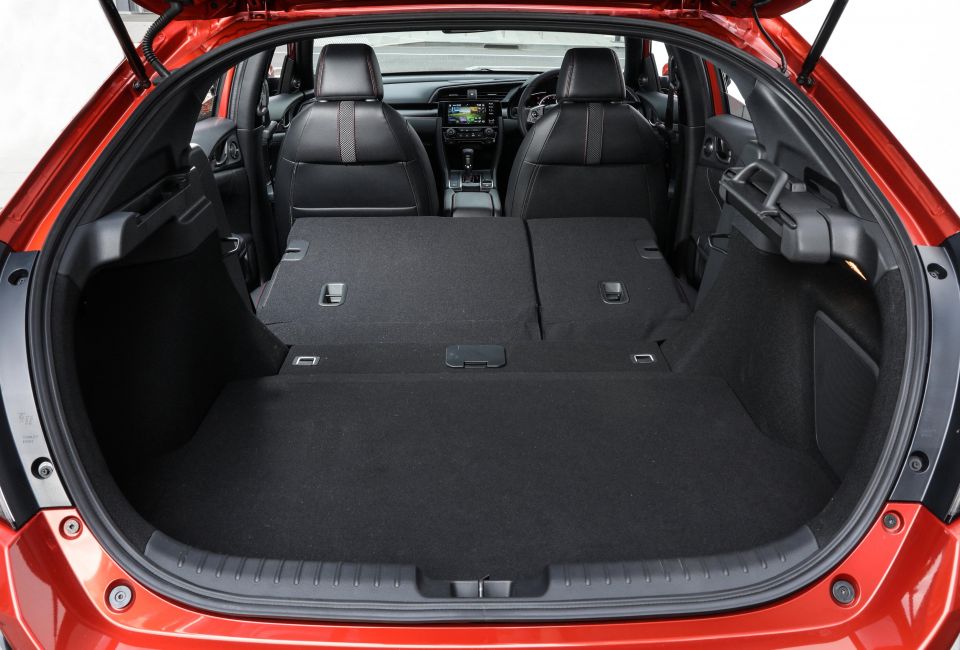
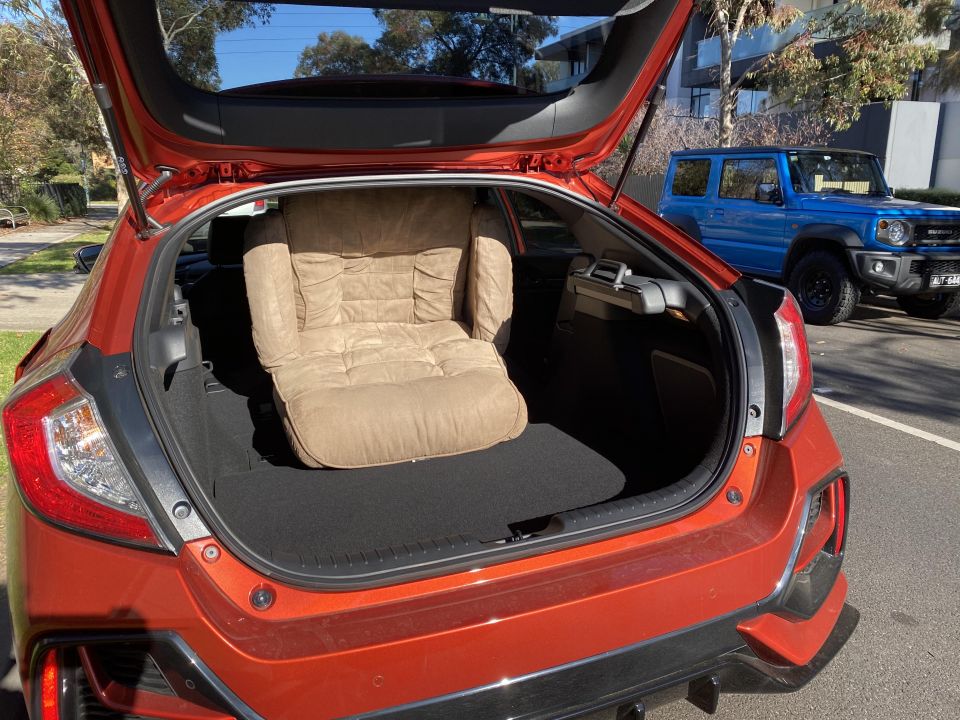
The centre screen measures 7.0 inches, and like the Kia it offers Android Auto and Apple CarPlay phone mirroring, and pretty slick graphics. You can also tether your phone and use the screen as a web browser… for some reason.
But there’s no satellite navigation or Qi wireless phone charger, and the processing speeds and user experience feel a little inferior to the Kia’s newer system. Remember, the Civic’s design dates back a few more years than the Cerato’s does. I will say the 452W 12-speaker sound system has the Kia’s covered.
As is typical of Honda, back-seat space is vast – easily sufficient for two-metre tall adults, though the rear seats lack vents. There are two ISOFIX anchor points and top tether points located in the seat-backs.
As with the Kia, there’s a harder-to-package multi-link rear suspension system, but the boot is similarly sized at 414L. And the seats fold nice and flat. There’s a soft sliding cover for your cargo, and a space-saver spare.
As the picture attests, I could literally fit an armchair in the back.
| Cerato GT | Civic RS | |
|---|---|---|
| Length | 4510mm | 4515mm |
| Width | 1800mm | 1799mm |
| Height | 1440mm | 1421mm |
| Wheelbase | 2700mm | 2700mm |
| Boot space | 428L | 414L |
| Clearance | 135mm | 142mm |
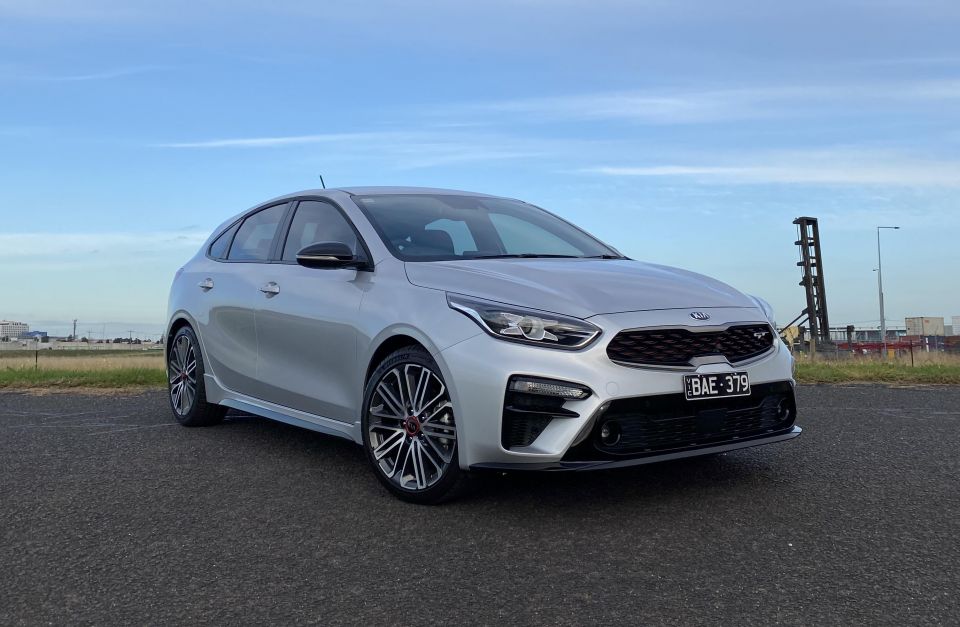

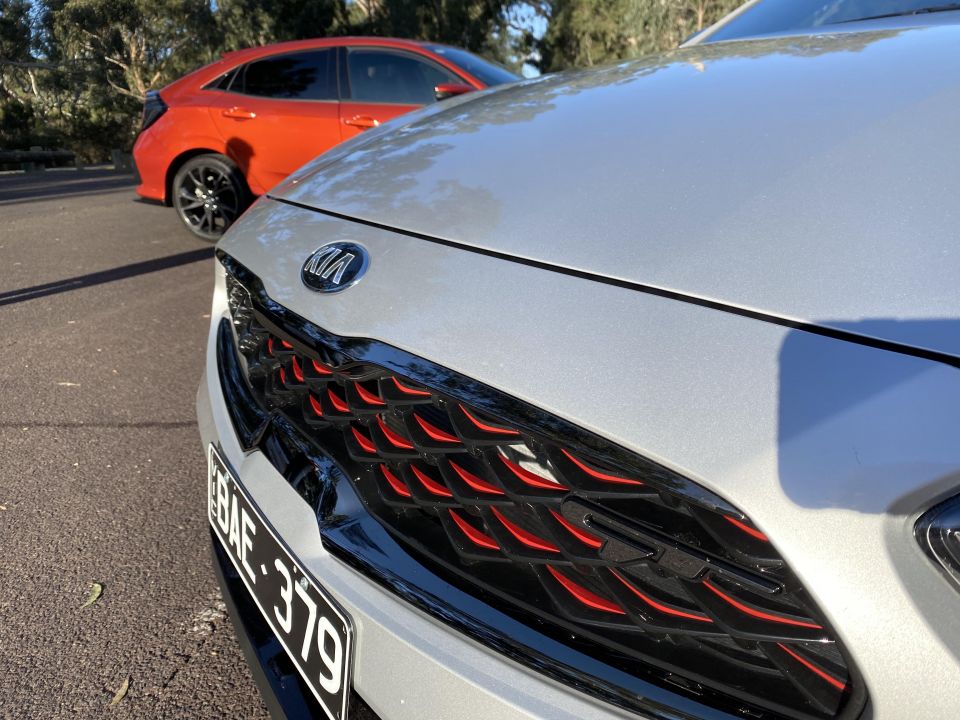
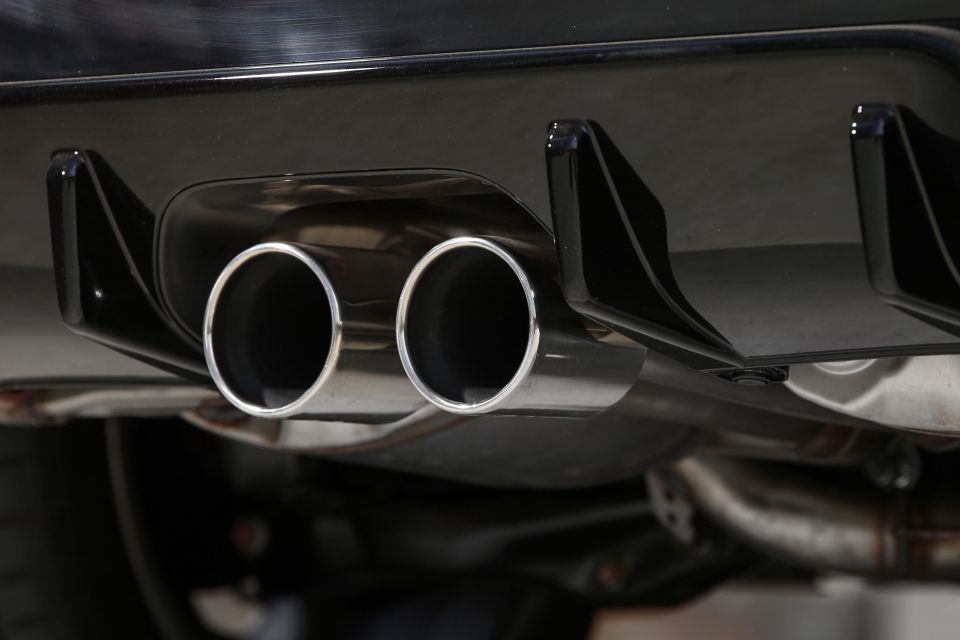
Honda’s 1.5-litre turbocharged petrol engine makes 127kW of power and 220Nm of torque, the latter figure from just 1700rpm.
By contrast the Kia’s 1.6-litre turbo makes 150kW and 265Nm, from an even lower 1500rpm.
As such the Kia’s power-to-weight ratio of 107.5kW per tonne eclipses the Honda’s 95.4kW/t.
Both are front-wheel drive (FWD). The Honda has a standard CVT auto whereas the Kia has a dual-clutch seven-speed auto.
The Honda’s rated combined fuel economy is 6.4 litres per 100km compared to 6.8L/100km for the Kia, and both drink 91 RON fuel.
| Cerato GT | Civic RS | |
|---|---|---|
| Engine | 1.6 turbo | 1.5 turbo |
| Power | 150kW @ 6000rpm | 127kW @ 5500rpm |
| Torque | 265Nm @ 1500rpm | 220Nm @ 1700rpm |
| kW / tonne | 107.5 | 95.4 |
| Trans | 7-speed DCT | CVT |
| Drive | Front wheels | Front wheels |
| Fuel use | 6.8L/100km | 6.4L/100km |
| Fuel tank | 50L | 47L |
| Fuel type | 91 RON | 91 RON |
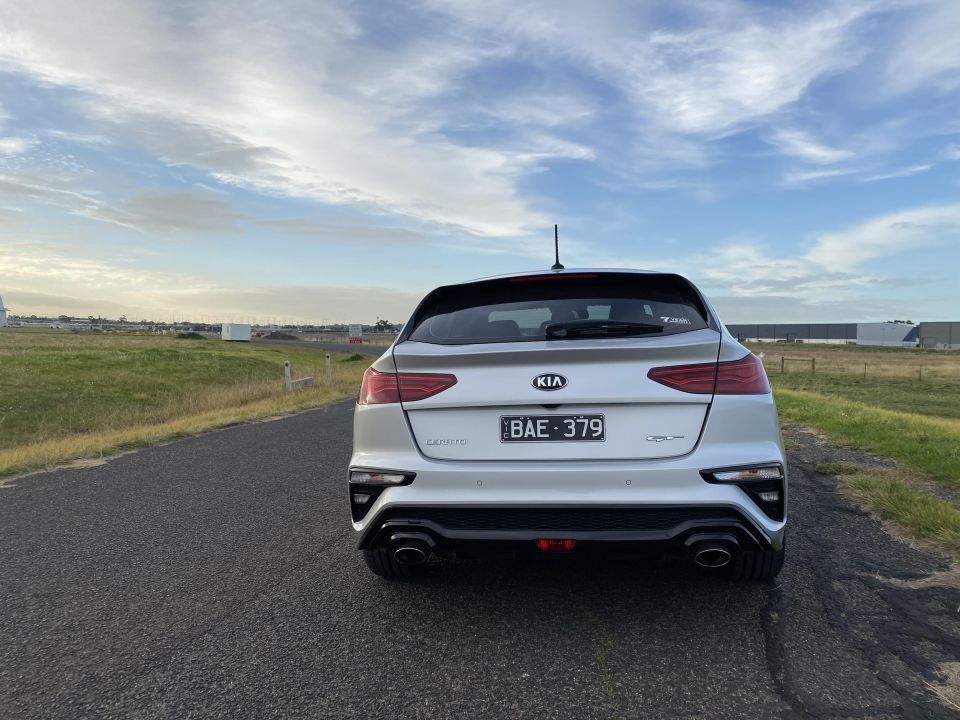

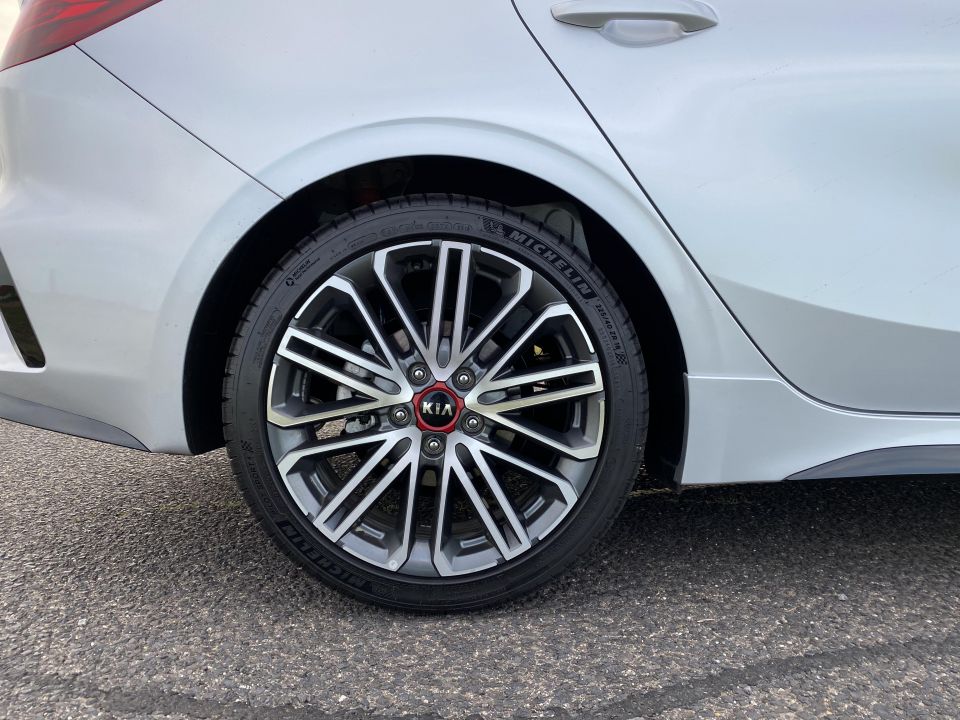
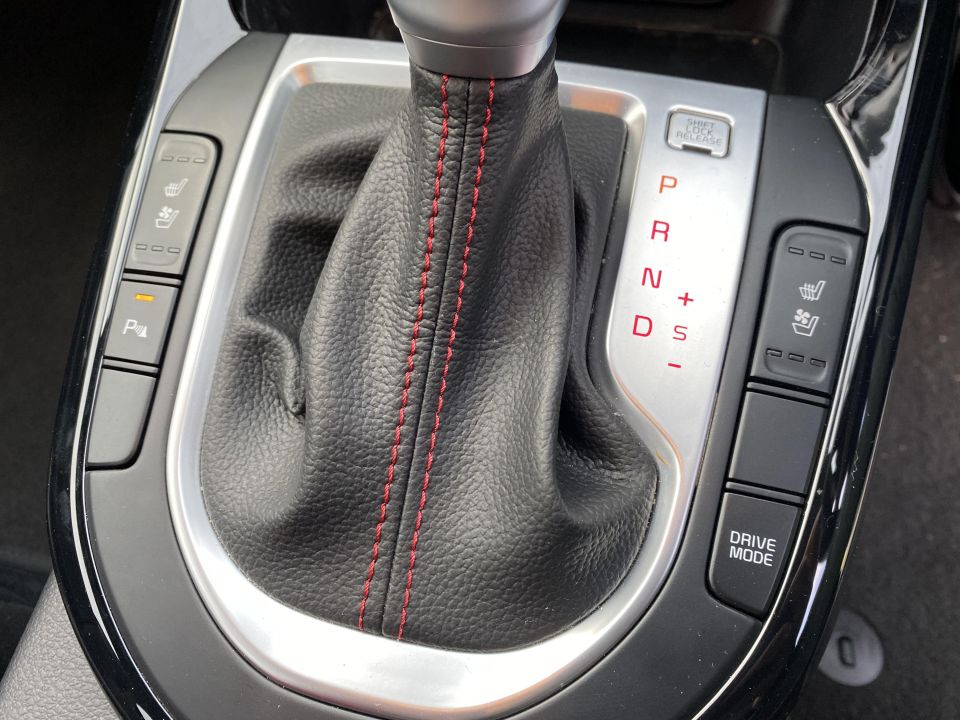
Kia Cerato GT
The engine offers relatively snappy performance, as our easily achieved 7.3-second 0-100km/h time showed. Like most small-displacement turbo engines, it has plenty of torque on tap enabling good rolling response.
There are various driving modes to play with that fettle the steering weight and drivetrain behaviour, the two notable ones being Smart (where the car decides which mode to drive in, for instance going into Sport when you mash the throttle and Eco when you lift off) and Sport (activated by putting the gear shifter into manual mode).
Doing this latter action clearly ramps up the amount of engine noise piped into the cabin too. It sounds artificial because it is, and whether you like this touch or not possibly depends on how much Gran Turismo you play. It doesn’t sound all that satisfying to me.
The Cerato GT is very good at putting its power to the road, with those sticky tyres hooking up quickly, and dry-road axle tramping and torque steer mitigated. The stability control system also stays largely out of affairs.
In most driving scenarios, the transmission proved fine, and it doesn’t have too much hesitation in urban confines. Yet it doesn’t have the rapid, rifle-bolt shifts of a Volkswagen DSG, and fails to downshift aggressively enough when braking into a corner, even in Sports mode.
One of the Cerato’s strong points is its handling. Kia’s Australian division specifically engineers the springs, shocks, bars and bushes in Sydney for our roads, because typical Korean tunes are too soft and pillowy for our tastes.
It handles quite tenaciously, taming front-drive understeer despite lacking a limited-slip diff. You can approach a tight corner quite hot, and feed in power a little early on exit, and the Cerato responds as you’d like it to. Those tyres certainly help with grip.
The steering has significant ‘weight’ or resistance, but is direct at the same time, and the body stays very flat against lateral loads. The fitment of independent rear suspension in this grade bolsters road holding over choppy surfaces too.
Kia’s engineers have clearly put sportiness at the forefront because the ride is very firm, especially at low speeds over corrugations. The fixed dampers control brittleness over sharp hits, but the springs don’t allow much body movement.
The active safety functions all worked as intended. The steering assist nudges you back between road lines nicely, and the cross-traffic alert nullifies any issues backing out of a spot given the sizeable rear-pillar blind spots.
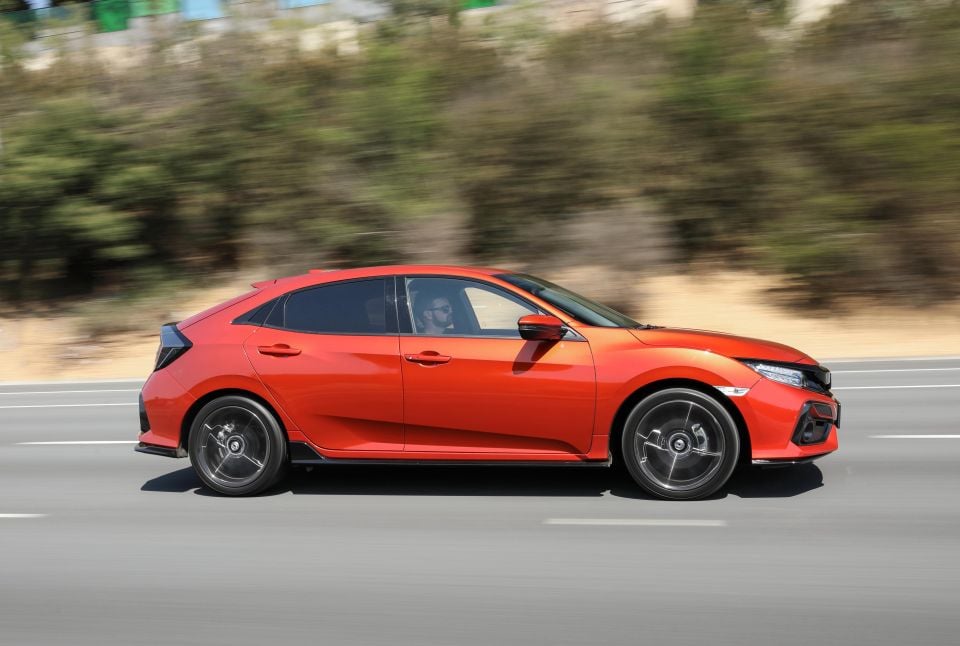

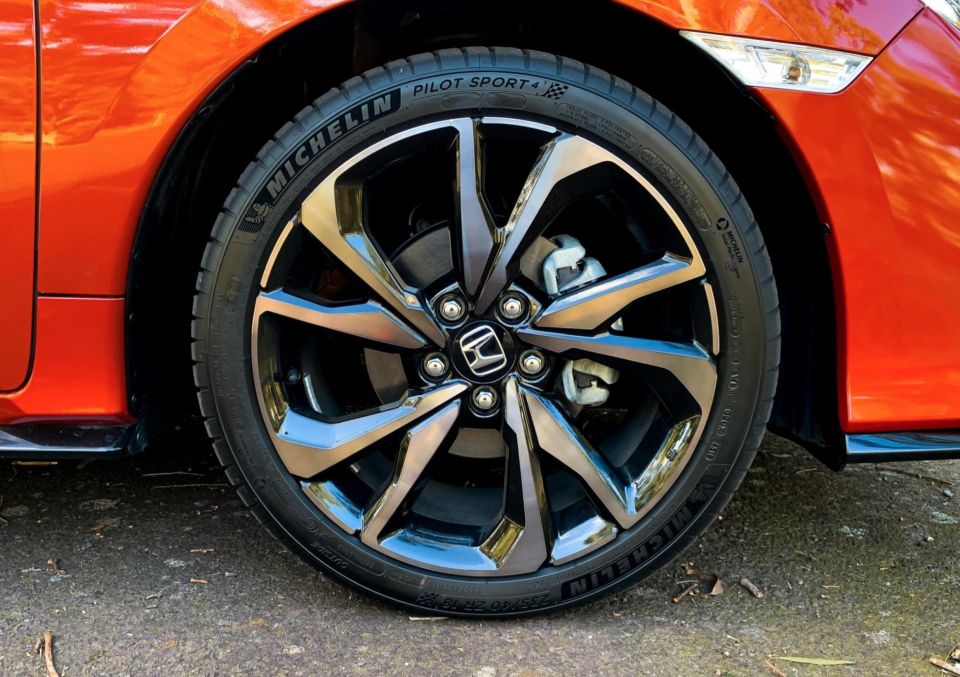
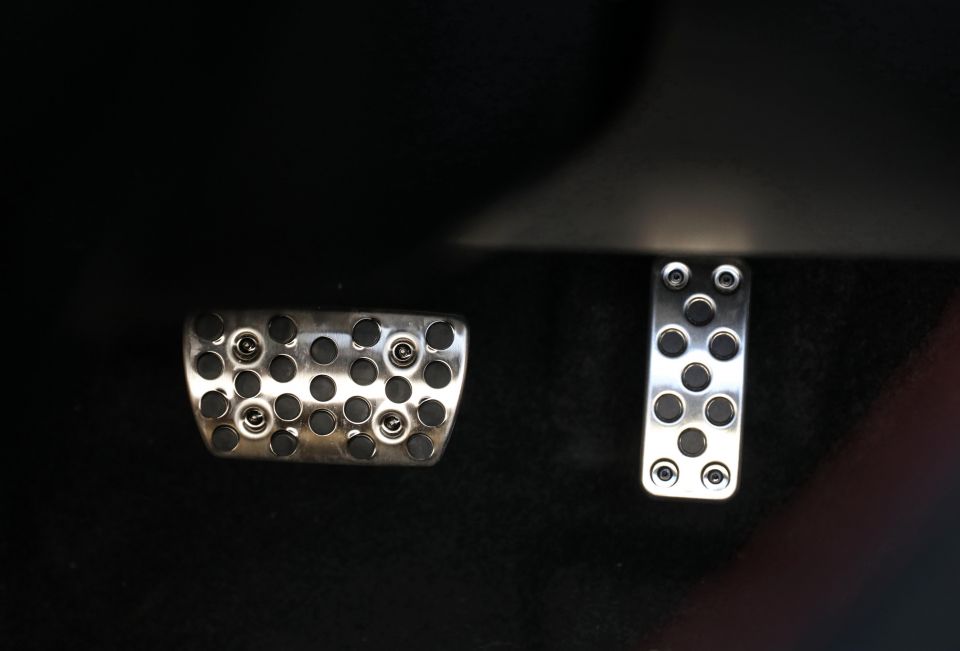
Honda Civic RS
While the power-to-weight ratio is inferior by some margin, the 0-100km/h sprint time is scarcely worse at 7.6 seconds.
The Honda engine lacks the fake inducted gruffness of the Kia’s engine regardless of which button-set mode you’re in, favouring refinement, but it’s a bit of a quiet achiever – smooth and punchy, and infinitely superior to the asthmatic aspirated 1.8-litre donk in the base models.
While a CVT is never going to offer the crisp and rapid shifts of a DCT, Honda’s effort is pretty solid, despite the extraneous manual mode.
It’s good at keeping the engine speeds at their ideal, and is tuned to keep thrashiness, flaring and droning out of the soundtrack. Smoother around town, too.
I really like Honda’s steering tune. It’s fairly non-resistant but very quick and responsive from centre. It’d be too sporty for Nanna in base grade but suits the RS well.
There’s no dedicated Aussie spring/bush/shock tune, but the bump absorption is excellent, with the Civic simply gliding over most corrugations and hits. Where the Kia is firm enough to elicit comment, the Honda is cushy indeed.
But the tyres are grippy, and the body control well-sorted – don’t forget this chassis at its core underpins the brilliant Type R mega hatch.
As an everyday warm hatch, the Kia has clarity of focus but the Honda’s comfort and steering certainly give it an edge in some departments.
The Honda’s safety systems are fine, but the camera display showing your passenger-side blind spot is less effective than a conventional two-sided blind-spot monitor.
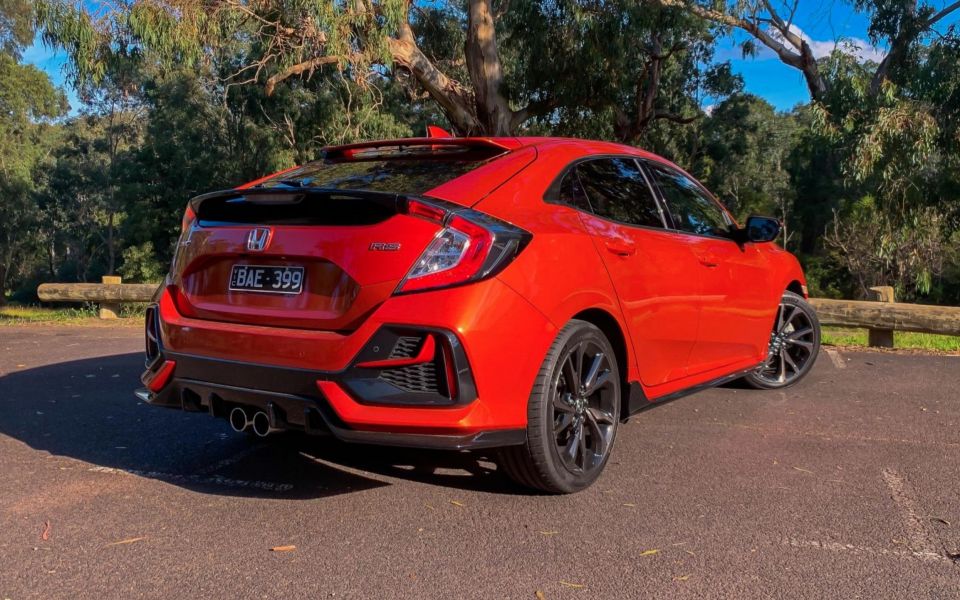
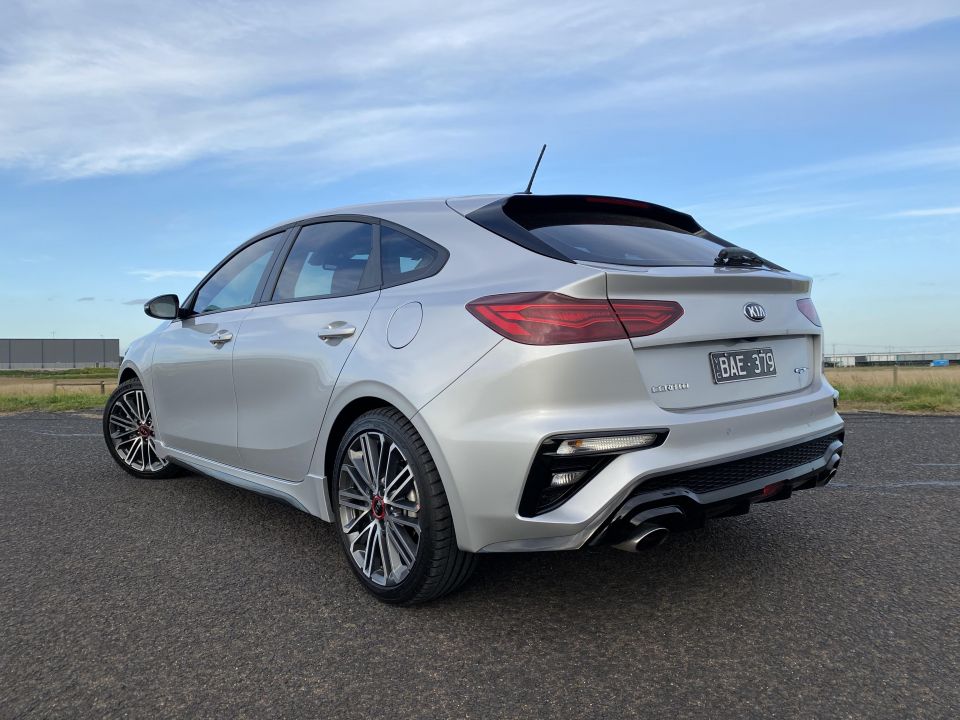
Kia offers a market-leading seven-year, unlimited-kilometre warranty, compared to Honda’s five-year/unlimited-kilometre policy. However, Honda does sometimes offer a seven-year term on a promotional basis, so enquire about that.
Both turbo engines have servicing intervals of either 12 months or 10,000km, which is a little short on the distance front. Each also offers capped price servicing which, at the time of writing, looked like this:
Kia:
Honda:
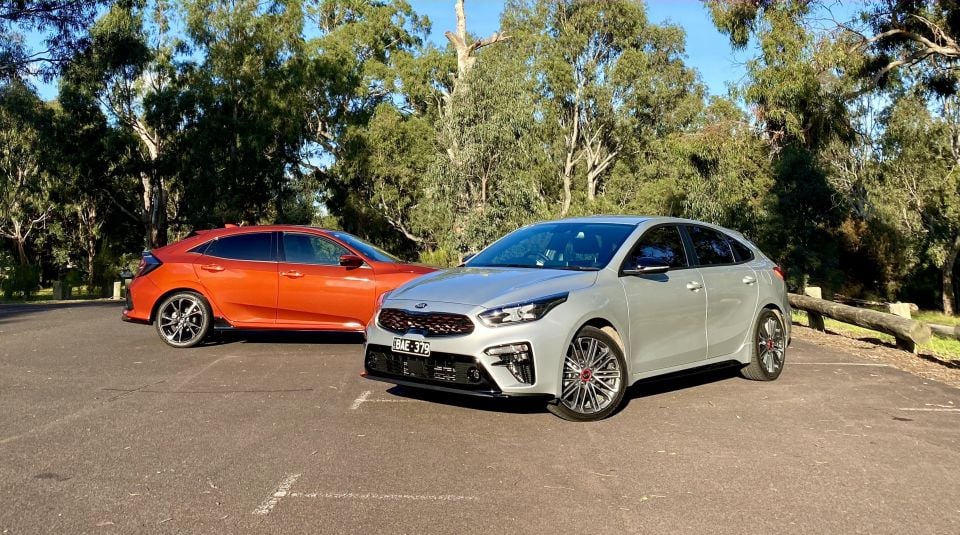
The Honda Civic looks more aggressive but is actually more comfortable than the firmly-suspended Kia Cerato. It also offers a slightly more flexible and capacious interior, and I prefer the weight and speed of its electric-assisted steering tune.
But the Kia clearly offers better value-for-money, a superior warranty, a bit more straight-line punch and theatre, and a few extra luxury features for good measure. They’re both worthy of commendation, but the Cerato GT takes the edge for mine.
Share your thoughts with us in the comments below!
Share your thoughts and write a review of a car you own and get featured on CarExpert.


William Stopford
11 Hours Ago


Ben Zachariah
12 Hours Ago


Derek Fung
12 Hours Ago


Matt Campbell
19 Hours Ago


William Stopford
1 Day Ago


Josh Nevett
1 Day Ago